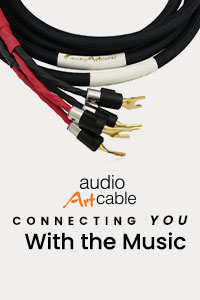Klyne SK-5A Preamplifier
 TONEAudio publisher Jeff Dorgay handed me this handsome preamplifier from the 80s with a sly look on his face. I vividly remember Klyne from the late 80s and early 90s. It was a small company that received high praise from the audio press and in-the-know enthusiasts, yet its products were tough to find.
TONEAudio publisher Jeff Dorgay handed me this handsome preamplifier from the 80s with a sly look on his face. I vividly remember Klyne from the late 80s and early 90s. It was a small company that received high praise from the audio press and in-the-know enthusiasts, yet its products were tough to find.
The manufacturer had a small dealer network and did not advertise. The SK-5A pictured here originally sold for $2,795, putting it on par with what Audio Research, Mark Levinson, and a few others charged for their top preamplifiers.
This particular unit was manufactured at the dawn of the CD era in 1984—and with only three high-level inputs: aux, tuner, and tape. Indeed, the Klyne is a vinyl lover’s dream. The onboard phonostage offers a wide range of MM and MC settings with adjustable gain, loading, and capacitance. You can even install your own custom resistors if the onboard settings don’t match your cartridge. If that isn’t enough, behold the settings for high-frequency contours that damp the high-frequency resonant peak exhibited by many moving coil cartridges. Many of today’s standalone phono preamps lack this functionality.
 Fully stabilized in 24 hours, bass slam and image depth are nothing short of amazing; it’s hard to believe this preamplifier is 25 years old. Since it features minimal current draw, you’ll want to always leave it on for best results. Once fully powered up, the Klyne offers a silky smooth presentation—but not the kind of smoothness you get from a preamplifier trying too hard to sound tube-like. Harmonic structures in the upper registers are just right: neither dull nor slow, but full of low-level resolution. These aspects cause the listening experience to be something very special. The unit delivers the type of harmonic richness that, after trudging through sterile silicon trenches, today’s finest high-end solid-state gear takes so long to produce.
Fully stabilized in 24 hours, bass slam and image depth are nothing short of amazing; it’s hard to believe this preamplifier is 25 years old. Since it features minimal current draw, you’ll want to always leave it on for best results. Once fully powered up, the Klyne offers a silky smooth presentation—but not the kind of smoothness you get from a preamplifier trying too hard to sound tube-like. Harmonic structures in the upper registers are just right: neither dull nor slow, but full of low-level resolution. These aspects cause the listening experience to be something very special. The unit delivers the type of harmonic richness that, after trudging through sterile silicon trenches, today’s finest high-end solid-state gear takes so long to produce.
And there’s plenty under the hood: A big circuit board with a layout that, save for Burmester products, is the most meticulous this writer has seen. Three pair of Linear Amplifier Modules figures prominently into the mix, as do a power-supply section and multiple banks of capacitors. Klyne even built-in its own noise filter, and this coming years before power-line conditioners became part of the audiophile vocabulary.
The Klyne SK-5A holds its own when compared to today’s gear. Only slightly lacking in ultimate detail and soundstage design when compared to several leading tube preamplifiers, the unit doesn’t shortchange dynamics and often exceeds its contemporaries in this field. Plus, it has a phonostage.
 Both the vintage Acutex 421STR and a current Denon DL-301 offer an excellent level of transparency—one well beyond what’s expected from a modern $1,000 phonostage. Considering that a clean SK-5A can be had for about $1,000, it represents a true bargain.
Both the vintage Acutex 421STR and a current Denon DL-301 offer an excellent level of transparency—one well beyond what’s expected from a modern $1,000 phonostage. Considering that a clean SK-5A can be had for about $1,000, it represents a true bargain.
I’m still scratching my head as to why Klyne never took off in the marketplace. You’d easily pay $5,000 -$6,000 today for such preamplifier performance—and one without a phonostage, to boot. If you can find a unit for sale, grab it. I’m keeping mine.
Stan Klyne currently makes new preamplifiers to order, and happily services existing products. My serial number reveals that this unit qualifies for a full capacitor upgrade (about $1,000), which will make it a truly modern preamp that yields the extra resolution and ultimate clarity that it currently lacks.





